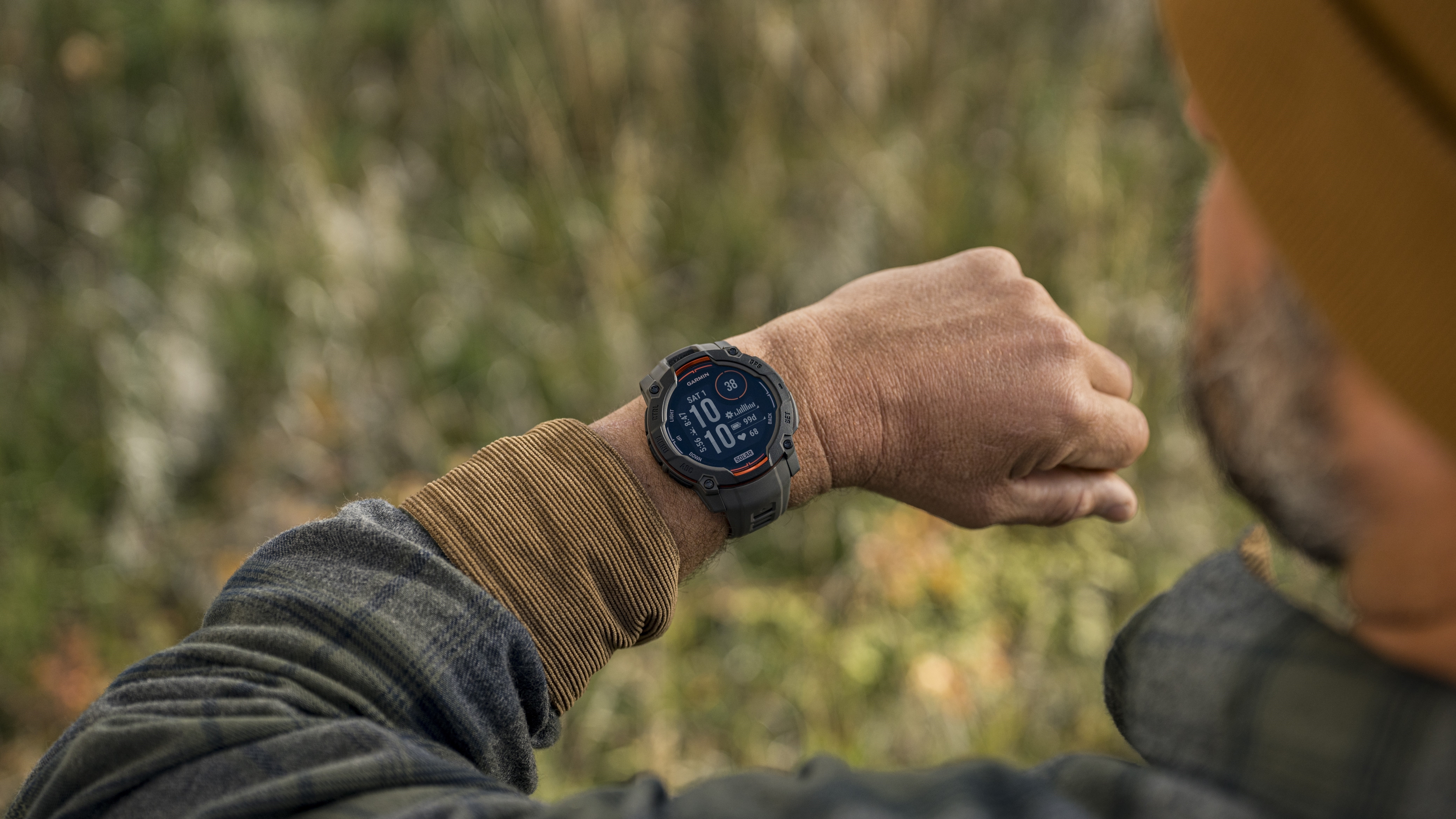
What you need to know
- Garmin has launched the Instinct 3 Solar and Instinct 3 AMOLED, both in 45mm and 50mm case sizes.
- The Instinct 3 Solar is even more long-lived than its predecessor but keeps its monochrome, low-resolution display.
- The Instinct 3 AMOLED is more expensive and shorter-lived with no solar recharge, but can display much more information.
- New features include a built-in flashlight, multi-band GPS, sleep coaching, and enhanced safety features.
After months of leaks, the Garmin Instinct 3 has made its expected arrival at CES 2025. It ships in 45mm and 50mm cases, each size available in both AMOLED and MIP Solar with a built-in flashlight.
The series' trademark epic battery life returns, but only the Solar version has "unlimited" daily battery life (with several hours of sunlight per day), up to 260 GPS hours, or up to 60 multi-band GPS hours.
Even without the solar boost, the Instinct 3 Solar beats the Instinct 3 AMOLED for daily battery (40 vs. 24 days), GPS (60 vs. 40 hours), and multi-band GPS (34 vs. 30 hours). But this Solar version has the same 176 x 176 resolution and infamous two-windowed, monochrome MIP as the Instinct 2 — though the display is slightly larger at 1.1 inches.
That's why many will jump to the AMOLED version for a 1.2-inch (390 x 390) or 1.3-inch (416 x 416) display, accepting the battery trade-off. Otherwise, you'll need to switch to the 90-day Garmin Enduro 3 for a full-resolution MIP display, and that costs $400 more.
Whether you choose the MIP or AMOLED display, Garmin gave all Instinct 3 models a built-in LED flashlight taken from the Instinct 2X Solar. So you'll be able to illuminate your path (at the significant cost of battery life).
Other series similarities persist, such as 10ATM water resistance, MIL-STD-810 thermal and shock resistance, training readiness, daily suggested workouts, and post-workout recovery time data. But the Instinct 3 looks slightly better because Garmin mixed some aluminum into the polymer bezel for a little facelift.
The Garmin Instinct 3 Solar costs $399 (45mm) or $449 (50mm), while the Instinct 3 AMOLED costs $449 (45mm) or $499 (50mm); these prices generally match what the last generation cost prior to price drops. All versions have a Black case with Black or Charcoal bands, but Garmin is selling "Limited Edition" versions of the AMOLED in Neo Tropic green or the Solar in Twilight blue that may sell out quickly.
Beyond the Instinct 3, Garmin has announced several other products at CES 2025, including a new HRM 200 and a Zumo R1 Motorcycle Radar. Plus, it won a "2025 CES Best of Innovation" award for the InReach Messenger Plus, which it announced last year.
Every key Garmin Instinct 3 upgrade

If you're considering a switch from the Garmin Instinct 2 Solar to the Instinct 3, you'll find a decent selection of new software features. You'll get advanced sleep coaching with nap detection, plus relaxation reminders and meditation guidance. You add a gyroscope for more accurate wrist tracking, plus (with AMOLED) on-screen workout animations and muscle maps.
For runners, you'll see new widgets for training load focus, load ratio, and upcoming races, as well as multisport auto transition, grade-adjusted pace, and wrist-based running dynamics. And you'll get more accurate location tracking, thanks to multi-band GPS and the dynamic SatIQ tool for swapping to better accuracy when needed.
Plus, you'll get dozens of new sports modes: Jump Rope, Indoor Walking, Virtual Running, Obstacle Racing, Golfing, Disc Golf, Archery, BMX, Boating, Water Skiing, Snorkeling, Wakeboarding, Wakesurfing, Tubing, Whitewater, Motorcycling, Overlanding, Motocrossing, ATVing, Snowmobiling, Pickleball, Badminton, Squash, Table Tennis, Padel, Platform Tennis, Racquetball, XC Skate Skiing, Ice Skating, Basketball, Volleyball, Field Hockey, Ice Hockey, Football/Soccer, American Football, Lacrosse, Rugby, Ultimate Disc, Cricket, Softball, Baseball, Boxing, Mixed Martial Arts, Jumpmaster, and Inline Skating.
As for other changes, the Instinct 3 adds an on-device Connect IQ store, Garmin Messenger app compatibility, Stocks and Tides views, live event sharing, incident detection reports, and advanced cycling dynamics.
In terms of battery life, the Garmin Instinct 3 45mm matches the Instinct 2 Solar 45mm with a 28-day baseline and "unlimited" with solar, but its solar panel is significantly more efficient, with 130 GPS hours compared to the Instinct 2 Solar's 48 hours. If you choose the Instinct 3 Solar 50mm, you'll get 40 days and 260 GPS hours, with the same 1.1-inch display and only 6g extra weight.
When the Instinct 3 first leaked in November, I predicted the AMOLED transition, but I also made other requests: abandoning the two-windowed design, adding music storage, switching to the Elevate v5 for ECGs and skin temp readings, and finally bringing back LTE support. Unfortunately, none of those requests came true.
My first impression is that this Instinct 3 update will make AMOLED users happy, but may feel a bit safe for fans of MIP displays who'd hoped to see a full-res, colorful display along with long battery life. Yes, the Instinct 3 Solar lasts much longer, but I'm sure many users would've loved a visual middle ground that gave them colorful watch faces and solar charging.
Still, I like Garmin's dual MIP/AMOLED approach with new models like the Instinct 3 and Fenix 8. It lets consumers decide whether they want to prioritize indoor or outdoor visibility or extra battery life over casual visual upgrades.
Long-lived and rugged
The Garmin Instinct 3 is the brand's latest smartwatch to transition to AMOLED, but MIP fans can stick with a lower-res option for "unlimited" battery life. The Instinct 3 is as rugged and distinct as ever, but somewhat lighter than it looks thanks to its polymer materials. It has all the training insights and sports modes that any outdoorsy types could ever want.







